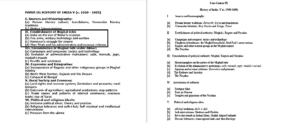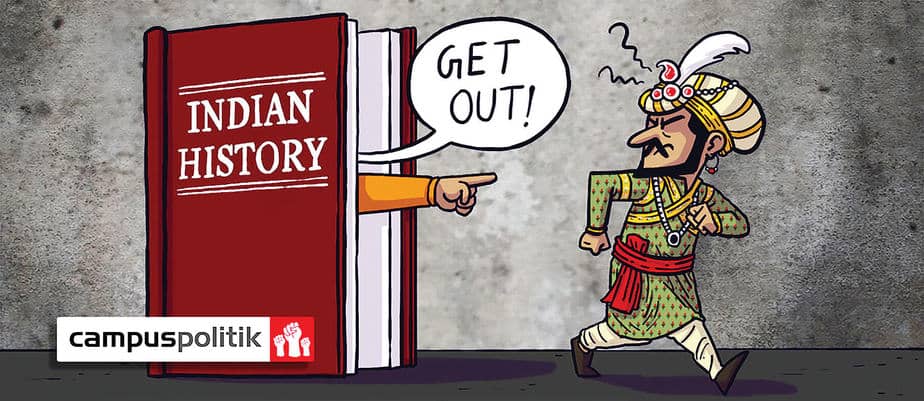DU’s new syllabus skips one of Indian history’s defining phase, claims varsity’s history student
When the Delhi University’s history syllabus was changed mid-semester in 2016, students were assured that changes were minor. It was felt that the changes were restricted to the BA Programme and that honours students would remain unaffected. It’s been more than a year and while education boards and universities have often been in news for attempting to rewrite history, revision of the DU history syllabus has largely gone unnoticed.
It’s not that the changes have been minor or inconsequential. The revised syllabus has not only changed the time-period of papers, but also the content and that is where it gets disturbing.
BA (Honours) History’s Paper IX: History of India, which earlier covered the period through 1550-1605 CE, now covers the period through 1500-1600 CE. While the new syllabus, prima-facie, covers a longer period — from the fall of the Delhi Sultanate and the establishment of the Mughal Empire to the end of Akbar’s long reign — in reality, it doesn’t. A study of its content would reveal that the new syllabus has sliced away a major chunk of what was being taught earlier.
While the previous syllabus comprised six topics, the new syllabus is made up of five. And this, when the new syllabus covers a far longer period.

Sounds confusing, right? Well, there is more.
The new syllabus has removed an entire topic –Establishment of Mughal Rule – from the paper. The students now no longer have to study Babar’s invasion of India, establishment of the Mughal Empire, the flight of Humayun, the establishment of the Sur Empire, and the eventual return of Humayun. The new syllabus, thus, omits one of the more significant phases of Indian history from the syllabus altogether.
The revised syllabus for the paper was not implemented for the 2015-18 batch. The 2015-18 batch studied the Sur dynasty and the administrative changes and innovations made by Sher Shah Suri.
It is the 2016-19 batch that first got a taste of the new syllabus in their fourth semester that began in January 2018. While they studied the Delhi Sultanate in third semester, they never got to study its fall or the establishment of the Mughal Empire in the fourth semester. They also never studied the Sur dynasty. They only studied Akbar’s reign. How the syllabus skips such a significant period of history remains beyond comprehension.
A professor of medieval Indian history in a South Campus college termed the revised syllabus as entirely ‘non-thematic’ and ‘bare of all logic’. He further said that teaching Akbar’s policies —many of which were innovations of Sher Shah’s policies —without teaching Sher Shah ot the Sur dynasty defied
all logic.
This revision and omission of Mughal history coincides with the Mughals facing the ire of the Bhartiya Janta Party-led governments across India. The state governments have not just repeatedly termed the Mughal emperors as plunderers, but have also commissioned panels for rewriting history. For a long time now, BJP leaders have been targeting the Mughals, terming them as plunders and traitors. They have also said that Mughal monuments, such as the Taj Mahal, do not represent the Indian culture or heritage. This is, therefore, not an isolated incident, but part of a larger scheme in which attempts have been consistently made to drive Mughals out of the annals of history. Also, this comes at a time when research seats in the country are being reduced, with Jawaharlal Nehru University witnessing a reduction of more than 80% of its MPhil and PhD seats.
These are not just attempts at twisting the historical narrative, but also attempts that contribute towards building a generation that has a very low historical and cultural awareness. The low level of historical awareness was seen in the Padmaavat episode as well.
There is another thing that is baffling — the absence of political criticism. When state education boards and universities in Rajasthan, Maharashtra, and Uttar Pradesh changed their syllabuses or set up panels to rewrite histories, politicians and academicians came together to condemn their moves. But when the same happened in Delhi University, no one batted an eyelid. This may be understood by the fact that Rajasthan, Maharashtra, and Uttar Pradesh are all large electorally significant states, whose elections set the tone for the general elections.
The trend is, therefore, very disturbing. Students are being reduced to mere political capital and are on their own. So the next time DUTA or DUSU carries out a protest, students ought to be at the forefront, because it is students, not the teachers and karamcharis of the university, who are at the epicentre of the onslaught on higher education in India.
This article was originally published in Newslaundry





